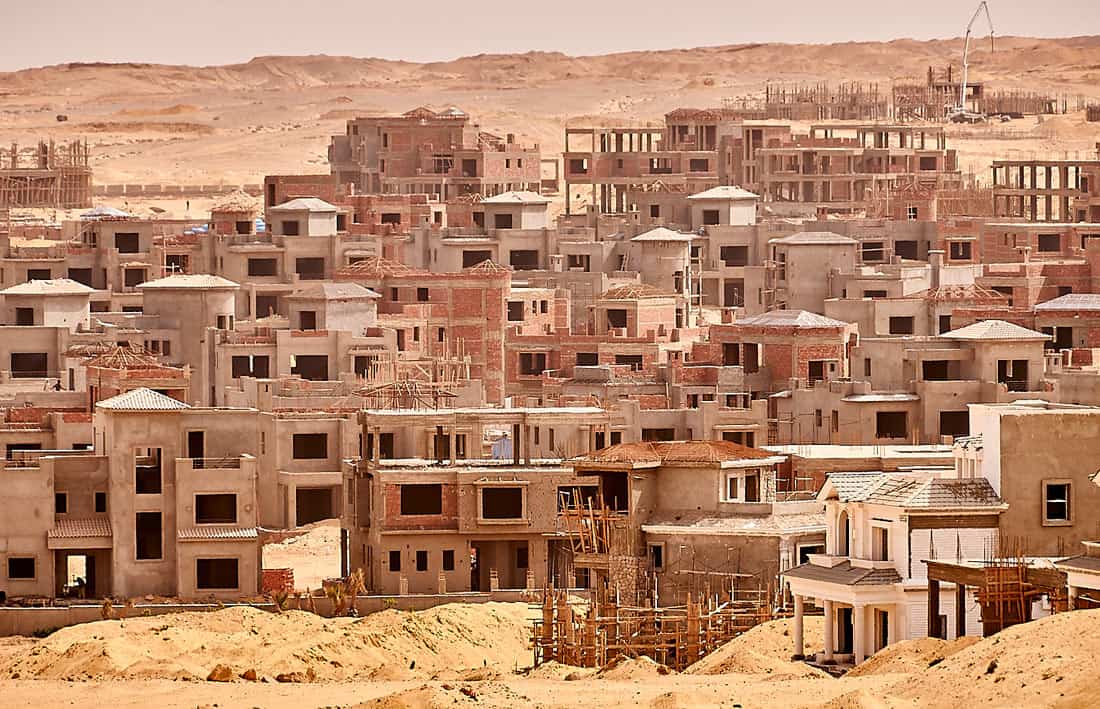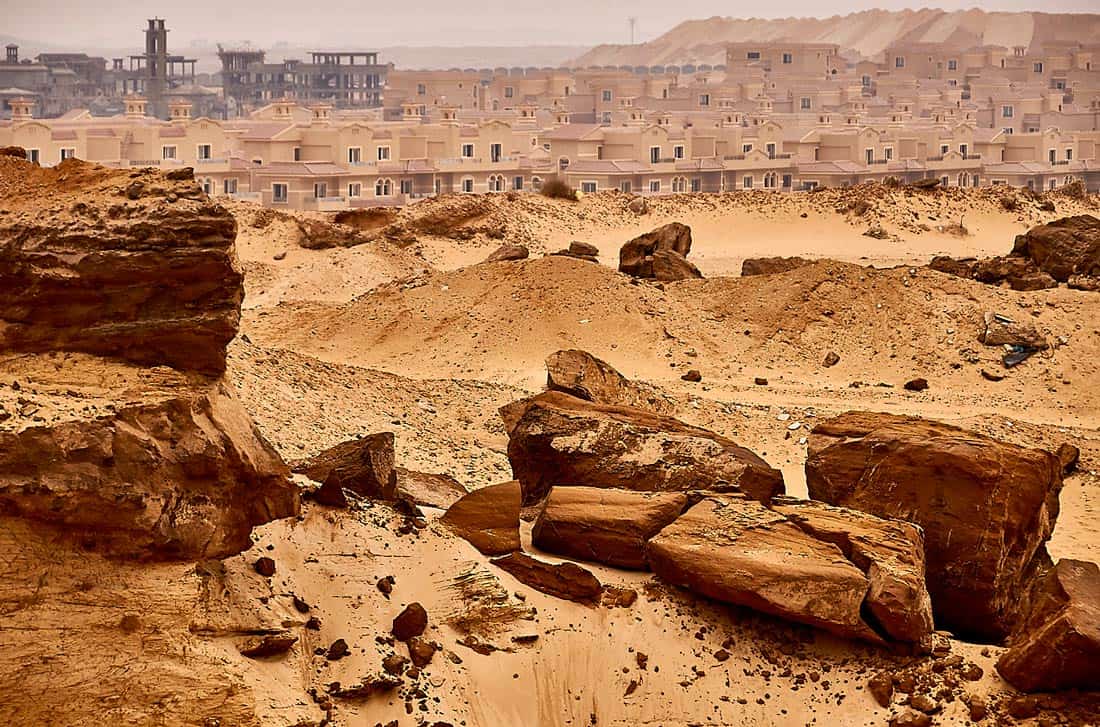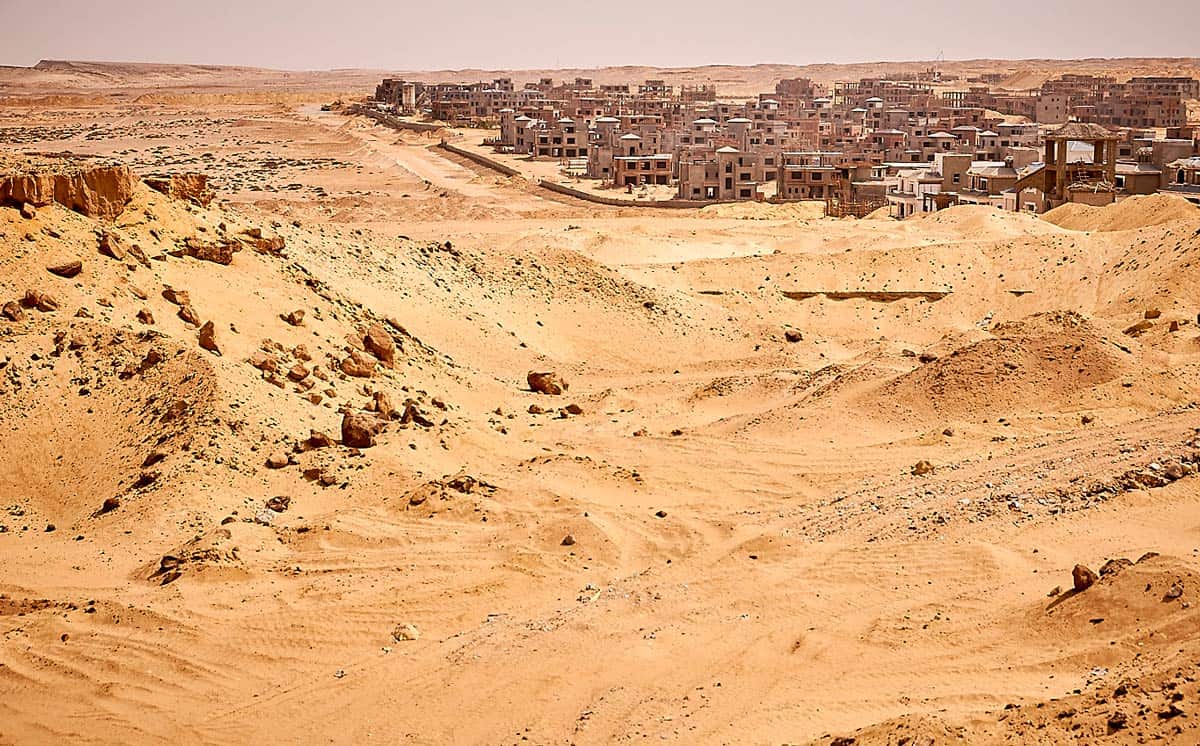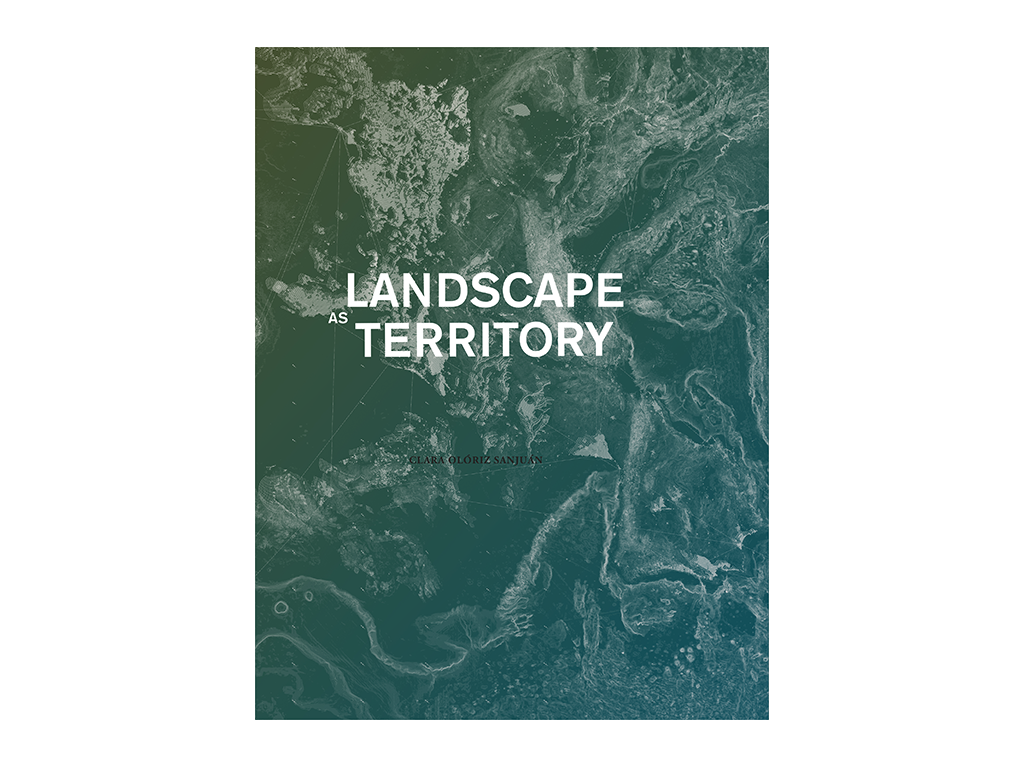The objective of “Desert Cities” is to portray the construction of new developments in the desert on the outskirts of Egypt’s main cities including Cairo, Alexandria, Hurgada and Aswan.
The main focus has been placed on New Cairo in the Eastern part of Cairo, since it is the largest in scale and is intended to host millions of people.
This work emerged when the author decided to wander with a camera for a period of two years far from the Nile River. The photographs cover a territory that stretches along the boundary lines between the emerging cities and the desert, from Greater Cairo to Suez.
The work was not intended to become a formal critique through photography on how New Cities in Egypt were being built and if it really meets the needs of the Egyptian people or not.
The artist intended to spark reflection about the urbanistic development formulas used in Egyptian new cities and how they shape the surrounding desert and the social fabric of the inhabitants.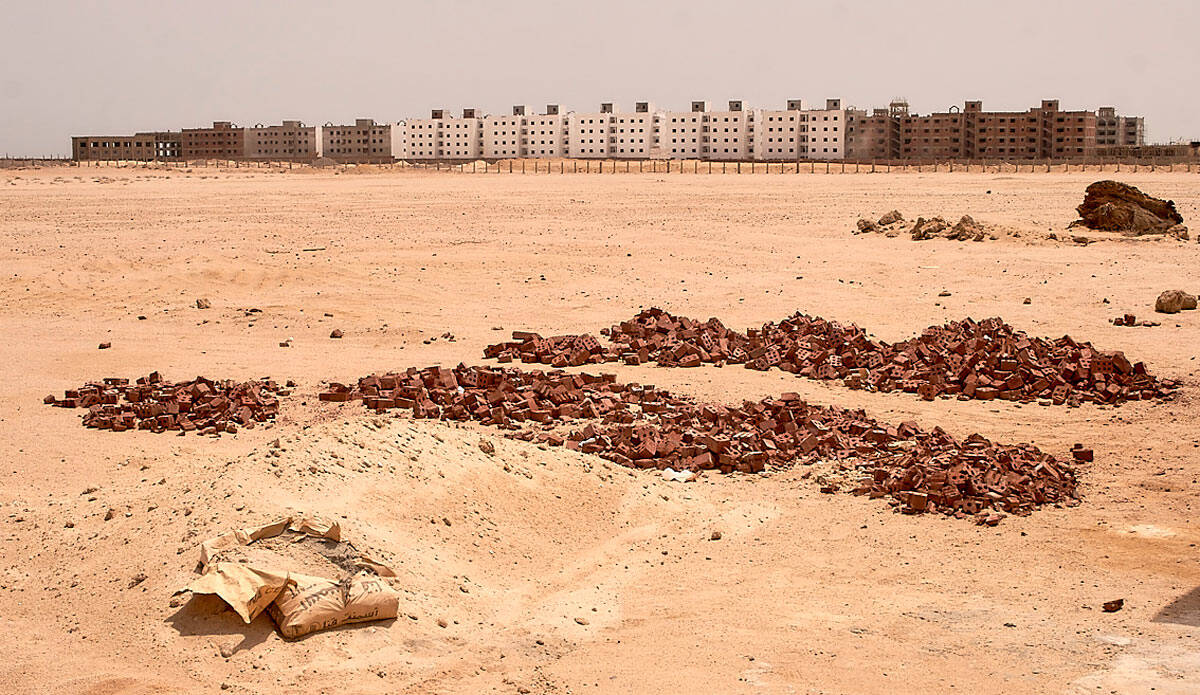
A few scholars have written about this particular urban phenomenon in the Middle East, providing well-rooted empirical background. In fact, I agree that New Cairo is mostly for the wealthy and does not solve the scarcity of housing for the lower social strata. Eventually, this disconnection with reality, in which more housing is required for the lower classes will transform these places for the wealthy into utopias in the desert (ghost towns).
I have photographed these territories of desolation, from tower blocks to low-rise constructions. When it comes to the former, I believe that the construction of gated communities is a global trend rather than a local need. New Cairo will introduce a new way of living for Egyptians based on the construction of fear and stratification, which will push the population towards deeper social segregation.
As a visual artist I wanted to concentrate at one level on the aesthetic values generated when a new city is built from scratch, and contrasting that with a strong emphasis on the alterations in the landscape’s topography.
Finally, I attempted through visual inputs to posit fundamental questions on how we are shaping the cities of the future.
In the past I have done work through film and photography about high-density cities in Asia. Particularly, I focused on the new towns: Chongqing, Busan, Seoul, Beijing, Canton or Hong Kong. I spent numerous hours pondering the influence of geographical conditions and different human behaviours, based on identity, economy and social traits, in determining the evolution of cities.
In Asia, my eye was too comfortable dealing with the vertical axis during times of stability. In New Cairo, I had the opportunity to tackle the new horizontal city during an exceptional historic period in Egypt, the Arab Spring.
As something anecdotic about my life, I have always shifted from extreme vertical cities to horizontal ones. I have lived in predominantly horizontal cities such as Los Angeles and Johannesburg or vertical ones like New York or Seoul. Interestingly enough, my home base is also in Benidorm, the most vertical enclave in Spain. My life could be seen as one of Piet Mondrian compositions, radically shifting from one axis to another. This particular obsession between vertical and horizontal shapes how I see the world and interpret what I see through images.
Overall, “New Cairo” and the other locations became a long-term project in a territory, which required both a strong physical and emotional involvement. Distances between construction sites were very long and the socio-political context was at the brink of collapse.
Considering that it was complicated to photograph any subject within the city centre during the Arab Spring uprising, these new spaces became a straightforward solution to disconnect from the daily stress when the governmental forces where clashing with the opposition in the city’s central areas. The new construction sites in the middle of nowhere became a sort of therapy. My office was located in Tahrir Square in downtown Cairo. In this plaza I witnessed how millions of people stood up to the government in one of the most violent episodes in modern Egyptian history. I lingered through extreme moments of both joy and discomfort during this episode in Egypt. I did not abandon the country with the rest of the Spanish and expat community. I was left with the vastness of the desert to escape into silence.
Every weekend early in the morning Ahmed and Omar would drive me from my home in Dokki to New Cairo. They would drop me off in front of Zaha Hadid’s future Stone Towers site, or at the main gas station on the Mubarak axes Road. From these locations I would delve by foot into the desert for hours, in an endless search for new structures rising from the sand. I had no GPS or Google maps information. My goal was to record the slightest human intervention in the desert. I wanted to feel with my senses how construction companies where moving and digging the land in order to accommodate the future structures. In parallel, I was experiencing through artistic creation my own movement of the mind. I was using artistic creation as a tool to develop my train of thought.
I took thousands of photographs in New Cairo. The editing was complex, since I found different stories within the project. For instance, images of New Cairo’s topographic qualities, architectural styles, people, textures and so on. At the end, the editing had to show a holistic perspective on New Cairo that could express levels of human intervention.
As I once pointed out to Tomas Alcoverro from La Vanguardia newspaper in Spain, I wanted to portray through photography a new conquest of the desert by humanity in Cairo, the quintessential metropolis of the Middle East.
Once I finished with New Cairo I started visiting the rest of the Egyptian cities and kept searching for other developments, although this time on a smaller scale.
